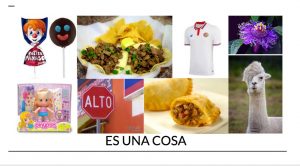A year passing between two versions of the same presentation changes things. That’s even more true when your teaching situation changes.
Last year I presented at Central States a session about helping students face a world of incomprehensible input and turn it into the comprehensible input they need for acquisition by teaching circumlocution early and often. I have to admit, it was a bit awkward. I got some questions like, “Would you teach this the second or third day?” “Where would this part go in the order?” I had to answer, “If I were teaching right now, I would…”
But now I am teaching. And now I know how that lesson would go, what at least my early novices can handle and what activities were successful. So, here are some resources from the new, and I hope improved, session here at CSCTFL, which I’ve been asked to repeat as an “All-Star” session this year.
Slides:
You can look at my most recent, especially early-novice-friendly resources in my blog post on my lesson last fall, and see the original post on this session from last year. Also, as an added note, at a later date we played the Flyswatter game with our categories on the sticky notes on the wall being (in TL) “person,” “place,” and “thing.” Students stood in two lines for teams, and when I showed one of the picture cards, they raced to be the first to hit the proper sticky note. They thought it was fabulous.
2 Comments
Comments are closed.





[…] was a great platform for talking about circumlocution (inspired by seeing this presentation by Sara-Elizabeth of Musicuentos). A couple students proudly told me after the AP test that when […]
[…] incomprehensibility. Circumlocution is (with pronunciation training maybe a close second). First, check out my post(s) on lesson plans to teach circumlocution in early novice classes. Then, play Matamoscas with […]